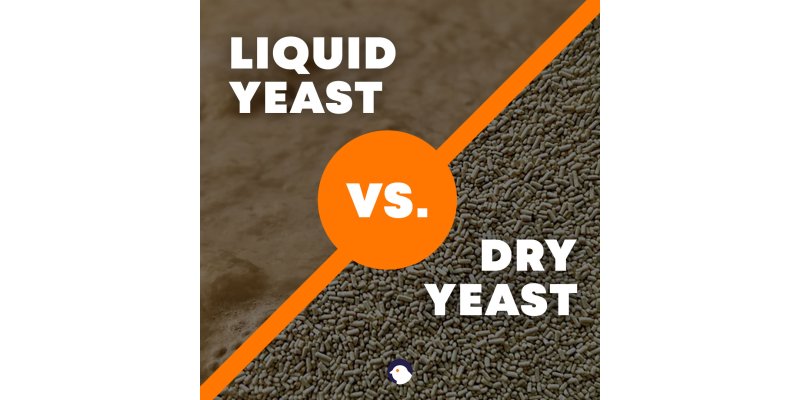Dry yeast vs. liquid yeast

Yeast is an essential ingredient for beer. Simply said, it turns sugars into alcohol, during the fermentation process. Originally, this was done by wild and spontaneous yeast, but modern brewing came op with regulated (liquid) yeast. This made sure brewers could maintain a constant quality.
The myth remains that liquid yeast will always provide better beers. While this was true in the early days of dry yeast, this theory has long been debunked. Since then, research has advanced both types of yeast to a higher level.
As with all the good things in life, everything comes down to personal preference. Both have their advantages, and both have some shortcomings.
Liquid yeast
Liquid yeast consists of moist cells in a sterile pouch or vial. Since not all liquid yeast strains can be dried, there are a lot more options here. For example, sour and funky beers require liquid wild yeasts, at the moment.
+ Bigger collection of yeast strains
+ More beer styles, including seasonal
+ Fresh
+ Possibility to harvest from your yeast starter
- More expensive
- Shorter shelf life
- More susceptible to temperature influence
Dry yeast
Dry yeast has gone through a dehydration process. All moisture is removed, leaving a powdery substance. It is much more durable than the liquid variant. You can keep it up to 3 years, while it requires no refrigeration.
When this type became popular, there wasn’t a lot of choice. Thankfully, times have changed. While you can still choose for neutral strains like LalBrew Nottingham or Gozdawa Pure Ale 7, there are also more present examples, like the fruity LalBrew Verdant IPA, the peppery farmhouse Gozdawa Noble Saison or the tropical LalBrew New England.
+ Cheaper
+ Longer shelf life
+ More user-friendly
+ Higher resistance to warmer temperatures
+ Requires no refrigeration
+ No need for a yeast starter
- Less different options




